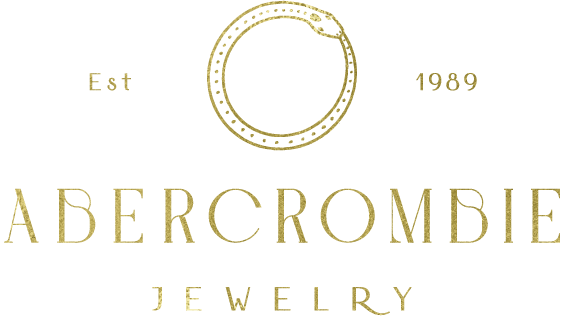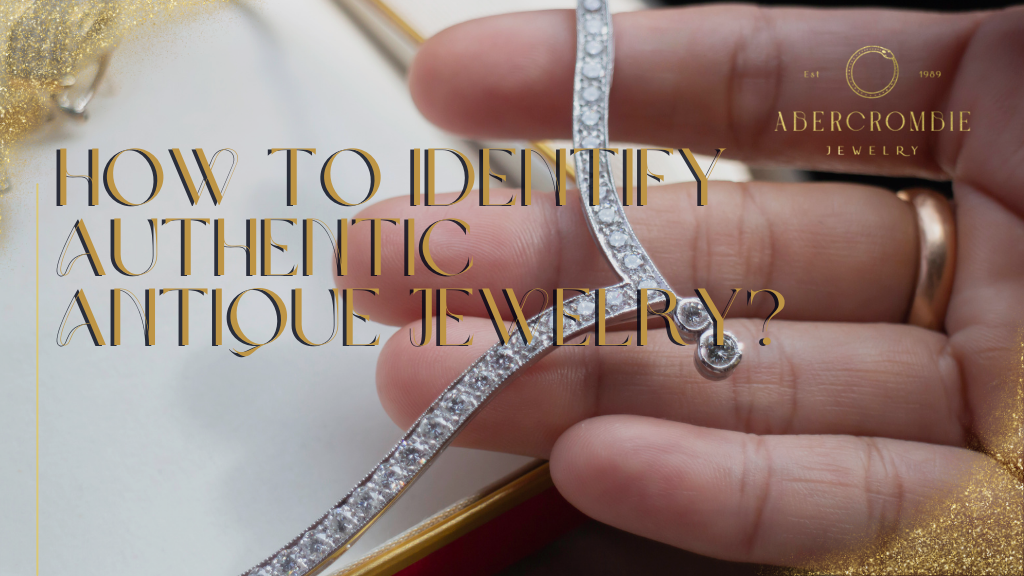Antique jewelry, often overshadowed by modern and contemporary designs, holds a unique charm and a story that sets it apart in the vast world of adornments. Its unparalleled elegance and the mystery of its past make it a category that stands on its own within the jewelry. Key types of antique jewelry include Victorian, Art Nouveau, Edwardian, and Art Deco pieces, each known for their distinct styles and historical significance.
Georgian jewelry also holds a special place, offering a glimpse into the craftsmanship and aesthetic preferences of an era long gone. Each type of antique jewelry showcases its own set of characteristics, craftsmanship techniques, historical contexts, and recommendations for wear and care. Explore with Abercrombie Jewelry, providing a deeper appreciation of what makes antique jewelry a treasured asset and a fascinating subject of study worldwide.
Why identify authentic antique jewelry?

Identifying authentic antique jewelry is crucial for several reasons. Firstly, it ensures the value of your investment, as genuine pieces can be significantly more valuable than replicas or fakes. Secondly, understanding the authenticity of a piece allows for a deeper appreciation of its history and craftsmanship, connecting you to the era it originated from.
Lastly, distinguishing authentic pieces protects you from potential fraud, ensuring you make informed decisions whether you’re buying, selling, or simply admiring antique jewelry. This knowledge empowers collectors and enthusiasts to navigate the antique jewelry market with confidence and expertise.
Look for hallmarks and maker’s marks.
When exploring antique jewelry, hallmarks, and maker marks are key indicators of authenticity, origin, and quality. Hallmarks, often stamped on the piece, can reveal the metal content and the country of origin, providing essential clues about when and where the jewelry was made. On the other hand, Maker’s marks identify the craftsperson or company that created the item, offering insights into its historical and artistic significance.
By learning to recognize these marks, collectors and enthusiasts can better assess the value and authenticity of antique jewelry pieces, enhancing their ability to make informed decisions in the market.
Understand common hallmarks
Common hallmarks include gold, silver, and platinum stamps, indicating the metal’s purity. For instance, gold may be marked with “18K” or “750” to signify its purity level. Recognizing these symbols is crucial for verifying the material’s quality and, by extension, the piece’s overall value.
Common Hallmarks Table
| Metal Type | Hallmark | Meaning |
| Gold | 18K | 75% gold purity |
| Gold | 750 | 75% gold purity, often used in Europe |
| Silver | 925 | Sterling silver, 92.5% silver purity |
| Platinum | 950 | 95% platinum purity |

Learn about notable makers
Notable makers such as Tiffany & Co., Cartier, and Fabergé have distinctive marks that testify to their craftsmanship. Familiarizing yourself with these marks can significantly enhance your ability to pinpoint pieces of high historical and monetary value.
Notable Makers Table
| Maker | Mark Characteristics | Notable Features |
| Tiffany & Co. | Distinct font | Often accompanied by the item’s date of manufacture |
| Cartier | Two Cs interlocked | May include serial number for item identification |
| Fabergé | Scripted “F” | Includes a unique inventory number |
Identify country of origin marks
Country of origin marks, like a lion passant for England or an eagle’s head for France, shed light on where the jewelry was crafted. These marks aid in authenticating the piece and enrich its historical narrative, offering insights into the jewelry-making traditions of different cultures.
Country of Origin Marks Table
| Country | Mark | Symbol Meaning |
| England | Lion Passant | Sterling silver quality |
| France | Eagle’s Head | Gold quality |
| Italy | 925 with stars | Sterling silver quality |
| USA | “STER” or “925” | Sterling silver quality |
This detailed approach, incorporating markdown tables, provides a clear and organized way to convey the specifics of hallmarks and maker’s marks, enhancing the reader’s ability to identify and appreciate the authenticity and value of antique jewelry.
Examine the craftsmanship
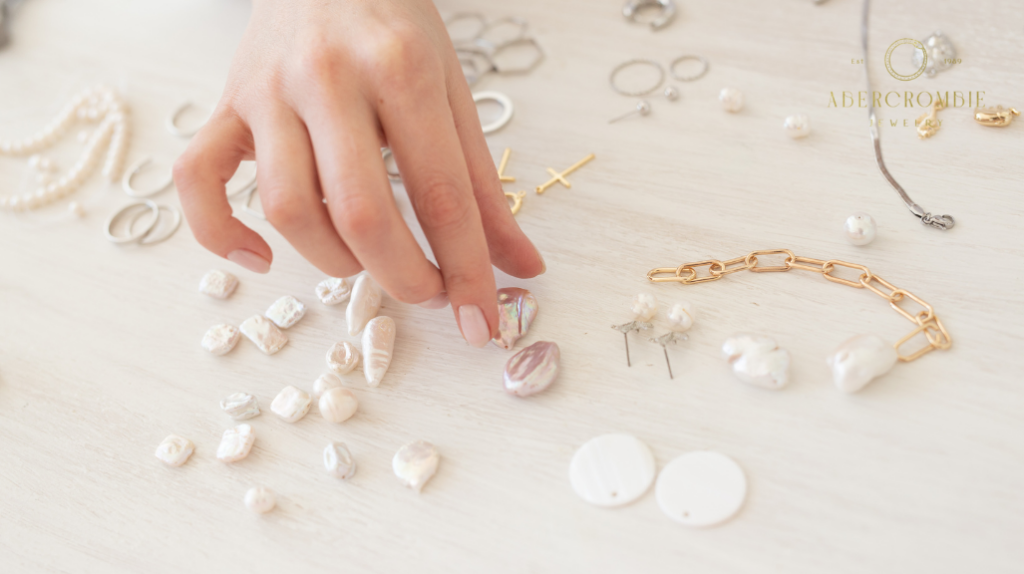
Close examination of antique jewelry’s craftsmanship is essential in determining its authenticity and quality. Look for signs of handcrafting, such as irregularities in design or pattern, which often indicate a piece’s age and historical value. High-quality materials and intricate details suggest a higher skill level and a more valuable and authentic piece.
Additionally, how components are joined together in antique jewelry can provide clues about its era and authenticity as techniques have evolved. Recognizing these craftsmanship nuances can greatly enhance your ability to discern genuine antique jewelry from reproductions.
Check for signs of wear.
Genuine antique jewelry often exhibits signs of wear consistent with its age. Look for areas where edges have become smooth from years of wear or where patterns and engravings show slight wear. These signs can help authenticate a piece, distinguishing it from newer items that may have been artificially aged.
Specific areas to examine include the back of brooches, the inside of rings, and clasp mechanisms, where wear might be more pronounced due to frequent contact with skin and clothing.
Assess the quality of materials.
The quality of materials used in antique jewelry is a critical indicator of its authenticity and value. Precious metals like gold and silver should possess a certain heft, and gemstones should be set securely and precisely. When combined with skilled craftsmanship, high-quality materials suggest that a piece is genuinely antique.
Look for color variations in gold that indicate different karat values, and examine gemstone settings for signs of custom fitting, which can differentiate between high-quality and lower-quality materials.
Look for unique or handmade features.
Antique jewelry often features unique or handmade characteristics that differentiate it from mass-produced items. Hand-engraved details, asymmetry in handmade beads, or slight variations in stone sizes can indicate a piece was crafted by hand, adding to its authenticity and historical significance. These features may include irregularities in hand-hammered finishes or nuances in hand-cut gemstones, providing tangible details for readers to look for.
Research the jewelry’s history.

Researching the history of an antique jewelry piece is vital for uncovering its story and verifying its authenticity. Delving into the era of design can reveal much about the piece’s background, including the cultural and historical context in which it was made. Consulting with experts or using reference books can provide insights into different periods’ specific styles, materials, and craftsmanship techniques.
Additionally, online databases offer a wealth of information for comparison, allowing enthusiasts to match their pieces with documented examples. This research not only enriches the understanding of the item’s significance but also aids in making informed decisions regarding its authenticity and value.
Identify the era of design
| Era | Time Frame | Key Features |
| Georgian | 1714-1837 | Elaborate gold work, nature-inspired designs, use of diamonds |
| Victorian | 1837-1901 | Romantic motifs, mourning jewelry, use of various gemstones |
| Art Nouveau | 1890-1910 | Nature-inspired themes, flowing lines, use of enamel |
| Edwardian | 1901-1915 | Delicate designs, use of platinum, lace-like decorations |
| Art Deco | 1920-1935 | Geometric shapes, bold colors, use of white gold and platinum |
| Retro | 1935-1950 | Large, bold designs, use of gold, Hollywood-inspired glamour |
Consult with experts or use reference books
| Resource Type | Recommendations |
| Experts | Accredited jewelry appraisers, historians specializing in jewelry, museum curators |
| Reference Books | “Warman’s Jewelry: Identification and Price Guide” by Kathy Flood, “Understanding Jewellery” by David Bennett and Daniela Mascetti |
Use online databases for comparison
| Database Name | Website URL | Description |
| Lang Antiques | www.langantiques.com | Extensive collection of antique jewelry images and descriptions |
| The Victoria and Albert Museum | www.vam.ac.uk | Offers a searchable database of jewelry from various eras, including detailed historical context |
| The Metropolitan Museum of Art | www.metmuseum.org | Features an online collection with high-quality images of historical jewelry |
Use specialized tests
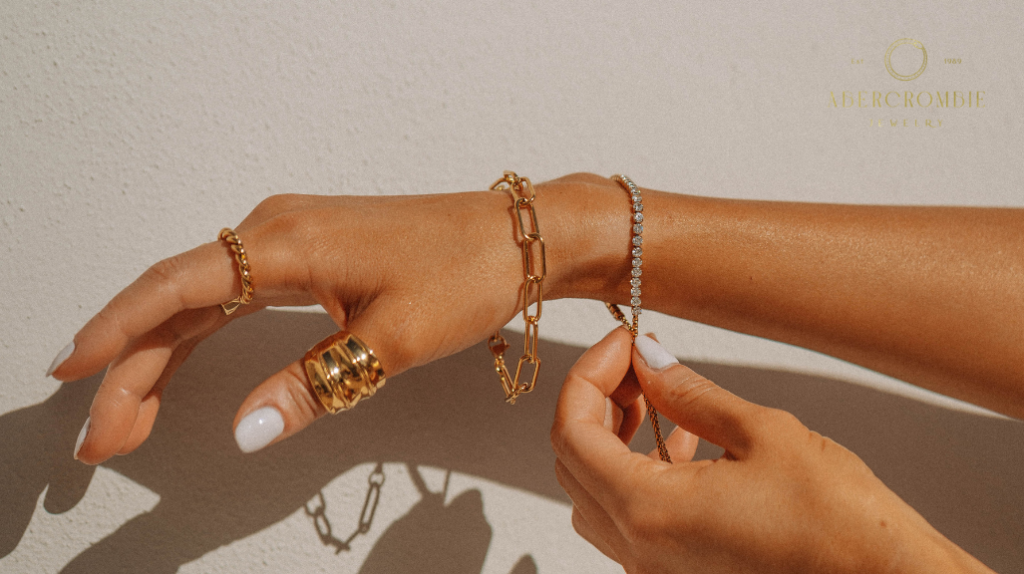
Utilizing specialized tests is a key strategy in confirming the authenticity and age of antique jewelry. The magnet test can quickly determine if a piece is made from genuine gold or silver, as these materials are not magnetic. However, it’s important to note that some high-quality fakes may use non-precious metals that are also non-magnetic, which could potentially lead to false negatives.
A patina test helps verify the age, as older pieces develop a natural patina that is hard to replicate artificially. Genuine patina often has a softer, more uneven appearance compared to the uniformity of artificially aged surfaces. Additionally, inspecting jewelry with a loupe can reveal wear patterns and craftsmanship details that indicate true antique pieces.
Look for signs of wear in places that naturally come into contact with skin or clothing. Pay attention to the intricacy and imperfections of handcrafted details, further supporting a piece’s authenticity. When used together, these tests provide a robust method for distinguishing authentic antique jewelry from more recent reproductions or forgeries, ensuring collectors can confidently make informed decisions.
Conduct a magnet test for gold and silver.
The magnet test is a straightforward yet effective method of ascertaining if the jewelry is crafted from genuine gold or silver. These precious metals are non-magnetic, so if a piece is attracted to a magnet, it likely contains other, less valuable metals. However, it’s crucial to remember that not all non-magnetic metals are precious, and some sophisticated counterfeits may use non-magnetic alloys to mimic gold or silver.
This quick test can swiftly eliminate some counterfeit items from consideration but should not be the sole authentication method.
Perform a patina test for age verification.
A patina test assesses the surface of the jewelry to authenticate its age. Genuine antique jewelry often exhibits a natural patina, a tarnish that develops over many years, enhancing its beauty and character. This patina appears warm, with uneven tarnishing that adds depth to the piece, unlike the uniform or artificially induced tarnish seen on newer items attempting to mimic age.
Observing the patina’s characteristics can serve as a hallmark of age and authenticity, although it requires a discerning eye to differentiate between natural and artificially aged surfaces.
Use a loupe to inspect for wear patterns.
A specialized magnification device enables a detailed jewelry examination for wear patterns and craftsmanship nuances. Authentic antique pieces usually display wear in areas consistent with extended use, such as along the edges of rings or the backs of brooches. Additionally, a loupe can reveal handcrafted details indicative of antique jewelry, such as irregularities in engraving or the unique imperfections of hand-set stones, further supporting its authenticity.
Consider the provenance

Considering an antique jewelry piece’s provenance, or the history of ownership, is critical in establishing its authenticity and value. Requesting documentation or a verifiable history can provide tangible proof of the item’s origins and journey through time. Evaluating the seller’s reputation is also essential, as reputable dealers are likelier to offer authentic pieces with clear provenances.
Lastly, analyzing an item’s auction history can offer insights into its desirability and value in the collectors’ market. Together, these aspects of provenance can significantly enhance your understanding and appreciation of an antique jewelry piece, ensuring a more secure investment.
Request documentation or proven history
Requesting documentation or a proven history of an antique jewelry piece is a key step in verifying its authenticity. Examples of solid documentation include:
- Certificates of Authenticity: Official documents stating the piece’s authenticity.
- Original Sales Receipts: Proof of purchase that can trace the item to a specific time and place.
- Historical Photographs: Images showing the piece being worn in the past, providing a visual link to its history.
These forms of documentation can provide crucial evidence of the item’s origins and journey through time, adding to its value and significance.
Evaluate the seller’s reputation.
Evaluating the seller’s reputation is vital when considering the purchase of antique jewelry. Criteria for evaluating a seller’s reputation include:
- Membership in Professional Organizations: Affiliations with recognized industry groups like the American Society of Appraisers (ASA) or the National Association of Jewelry Appraisers (NAJA).
- Positive Feedback on Platforms: Customer reviews and ratings on eBay, Etsy, or specialized antique jewelry forums.
- Transparency and Knowledge: Sellers who provide detailed information about the provenance and characteristics of their pieces.
Reputable sellers, whether individual collectors, antique stores, or auction houses, are more likely to offer genuine pieces and provide accurate information about their provenance, ensuring a trustworthy transaction.
Analyze the item’s auction history.
Analyzing an item’s auction history can offer valuable insights into its desirability and market value. Steps to access and interpret auction archives include:
- Accessing Auction House Archives: Many major auction houses, such as Sotheby’s or Christie’s, maintain online archives of past sales, which can be searched for similar items.
- Interpreting Auction Results: Understanding the final hammer price, along with any notes on the item’s condition, provenance, and rarity, can provide benchmarks for its value.
- Comparing Similar Items: Review the sale history of similar pieces to gauge the market demand and price trends.
Previous auction results can indicate the piece’s rarity and popularity among collectors, providing a benchmark for its value and helping to confirm its authenticity.
Understand gemstone characteristics
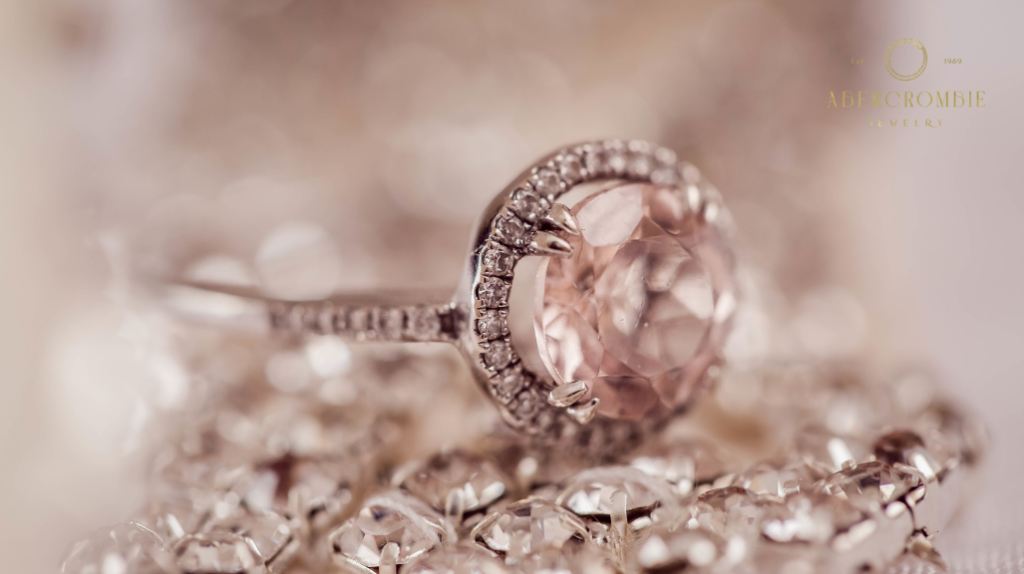
Understanding the characteristics of gemstones used in antique jewelry is essential for assessing their authenticity and value. Identifying whether natural or synthetic stones can significantly impact a piece’s worth, as natural gemstones typically hold more value. The historical cutting styles provide insights into the jewelry era since cutting techniques have evolved.
Additionally, assessing if the setting’s age is compatible with the stone can help verify the jewelry’s authenticity, ensuring that both elements are period-appropriate. This knowledge of gemstone characteristics enables collectors and enthusiasts to make informed decisions and appreciate antique jewelry’s true beauty and history.
Identify natural vs. synthetic stones.
Identifying whether gemstones are natural or synthetic is crucial in evaluating antique jewelry. Natural stones, mined from the earth, often exhibit unique inclusions and variations in color, while synthetic stones may appear unnaturally perfect. This distinction is vital because natural stones enhance the piece’s value and desirability.
Check for historical cutting styles.
Historical gemstone cutting styles can offer significant insights into a piece of jewelry’s age. Older techniques, such as the Old Mine Cut or the Rose Cut, indicate a piece’s antique status. Recognizing these styles aids in assessing the authenticity and specific period of the jewelry.
Assess the setting’s age compatibility with the stone
Evaluating whether the setting’s age is compatible with the stone is key to verifying the authenticity of antique jewelry. The craftsmanship of the setting, alongside the cutting style of the stone, should correspond with the same historical period. Discrepancies might indicate modifications or that the piece is not genuinely antique.
Evaluate the weight and feel.

Evaluating the weight and feel of antique jewelry is an integral part of authenticating and appreciating its value. Genuine antique pieces often have a distinct weight due to the quality and density of the materials used, such as solid gold or silver, which can feel different from modern alloys. Additionally, a piece’s construction and balance, including how it sits on the skin or in the hand, can provide clues about its craftsmanship and era.
Comparing these attributes with known authentic pieces can help distinguish genuine antiques from contemporary reproductions, ensuring collectors can make informed decisions about their acquisitions.
Compared with known authentic pieces.
Comparing a piece of jewelry with known authentic pieces can be a powerful method for assessing its authenticity. This involves examining the piece’s weight, materials, craftsmanship, and wear patterns against those of verified antiques. Such comparisons can highlight discrepancies or similarities that are key to the piece’s genuine antique status.
Consider the balance and construction.
Considering the balance and construction of antique jewelry is crucial in determining its authenticity and quality. Authentic antique pieces are often characterized by a certain heft and a well-executed balance that ensures they are worn comfortably and look proportionate. Examining how a piece is constructed, including the joining of components and the setting of stones, can offer insights into the era of its creation and the skill level of its maker.
Seek professional appraisal
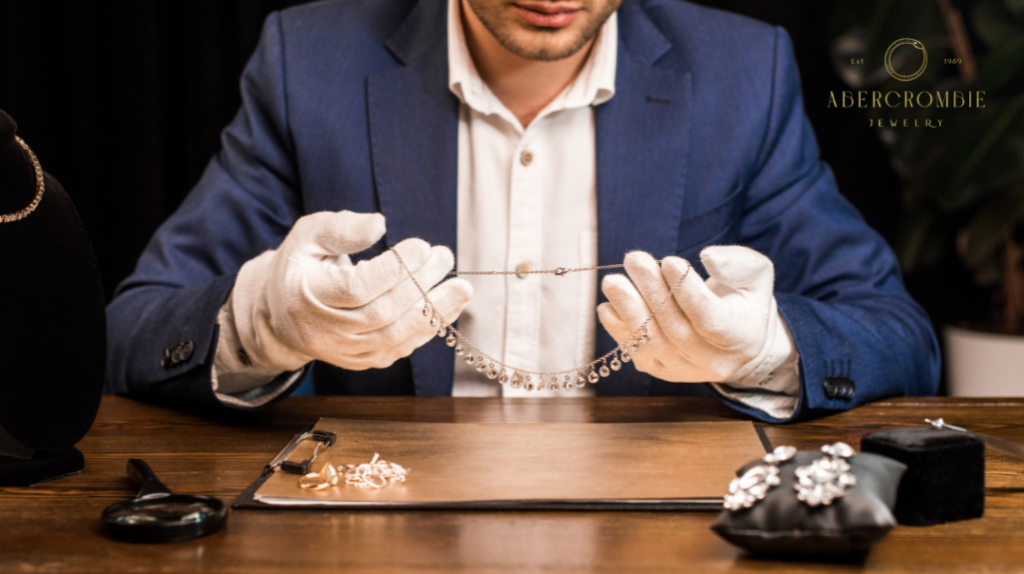
Seeking a professional appraisal is critical in confirming the authenticity, value, and history of antique jewelry. Choosing a certified appraiser with expertise in antique pieces ensures the evaluation is accurate and comprehensive. Understanding the appraisal process can provide insights into how values are determined based on factors like rarity, condition, and historical significance.
For particularly valuable items, considering multiple appraisals can offer a broader perspective on the piece’s worth and authenticity. This approach not only aids in making informed decisions but also in securing proper insurance and understanding the item’s place within the broader context of jewelry history.
Choose a certified appraiser.
Choosing a certified appraiser is essential for obtaining a reliable and accurate assessment of antique jewelry. Look for professionals with credentials from recognized appraisal organizations, as they adhere to strict standards of ethics and competency. A certified appraiser’s expertise in antique jewelry ensures a thorough evaluation of the piece’s authenticity, condition, and market value.
Understand the appraisal process.
Understanding the appraisal process involves recognizing the factors contributing to antique jewelry’s value. This includes the item’s historical significance, rarity, craftsmanship, and condition. An appraiser will also consider current market trends to provide a valuation.
Being informed about this process can help you appreciate the intricacies of how antique jewelry is appraised and valued.
Consider multiple appraisals for valuable items.
For particularly valuable or rare antique jewelry, considering multiple appraisals is advisable. Different appraisers might offer varying perspectives on an item’s worth based on their expertise and the current market. Obtaining several professional opinions can provide a more comprehensive understanding of the piece’s value and ensure you are well-informed about its significance and authenticity.
